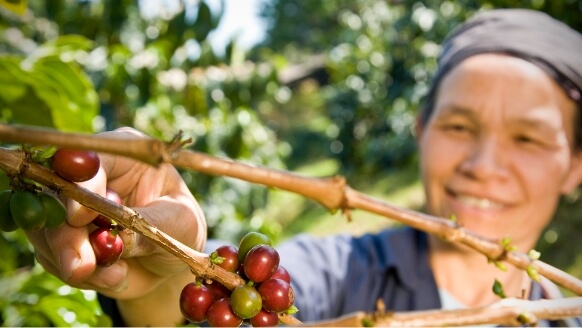Gustation – tasting with the tongue
The term gustation – from the Latin “gustare” (to taste) – refers to the perception of taste via the tongue’s receptors. In this case, chemical stimuli are perceived via taste buds on the tongue’s surface.
A differentiation can be made between various groups of basic qualities: sweet, salty, umami, sour, and bitter. The perception of “sweet” enables us to perceive sugar content, in other words to what extent the food contributes toward our nutrition. “Salty” tells us about the mineral content, which is important for all cell functions. “Umami” helps us to detect various proteins.
Watch out: coffee!
“Sour” and “bitter” are warning flavors which are supposed to prevent us – as omnivores – from eating spoilt (sour) or poisonous (bitter) foodstuffs. In terms of its bitterness and sourness, food must therefore comply with our acquired and experienced threshold levels for it to be accepted as nourishment – a challenge for such bitter and acidic foodstuffs as coffee.
In addition, we can perceive the groups “fatty”, “metallic” and “alkaline”. These functions also help us to recognize the quality and nutritional value of food.
About a quarter of all taste buds are located in the front two-thirds of the tongue, half in the rear third, and the last quarter in the region of the palate, nasal tract, and upper esophagus.
The taste buds are grouped in papillae, which can be divided into different groups: circumvallate, foliate, fungiform and filiform papillae. The large circumvallate papillae contain several thousand taste buds, the foliate papillae hundreds of taste buds, and the fungiform papillae each have three to five taste buds.
The filiform papillae do not contain any taste buds and merely provide a haptic perception of the food.
Why children do not like coffee
Over the course of our lives, the perception and evaluation of taste changes – for example, our tolerance of bitter substances increases as we get older. Whereas small children reject all forms of bitterness, acceptance grows with age and our exposure to such bitter substances.
It is only logical therefore that children – with a few exceptions – do not like coffee, while adults have grown to appreciate bitter foods such as coffee, beer, rocket, olives and spinach.







